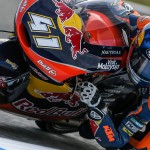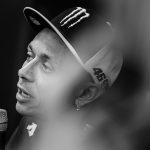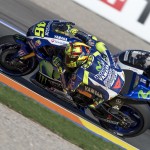Aside from a stellar opening third of 2017, Maverick Viñales’ time in the Movistar Yamaha squad has been far from straightforward. The young Catalan appears to have spent the past nine months searching for the feeling that carried him to three wins in the first five races of last year.
Pre-season was far from simplistic, and only a set-up change ahead of qualifying at the first race of the year prevented a lacklustre showing. A steady performance followed in Argentina and there were real signs of promise in Austin during the Grand Prix of the Americas, where Viñales scored a second place, a result that pushed him to within five points of the championship lead.
The Spanish Grand Prix at Jerez offers up an interesting proposition: a fast, flowing track that, historically, suits the strong points of the M1. Yet high temperatures usually leave the track low on grip, an obstacle both Viñales and Rossi were unable to overcome in 2017. A new track surface for this year’s race certainly offers hope, and the upcoming weekend will surely provide a sound judgement on Yamaha’s recent progress.
On Track Off Road recently sat down with Viñales’ crew chief Ramon Forcada to try and understand some of the issues that had affected his rider and the factory squad through preseason, and to gauge whether brighter times are ahead.
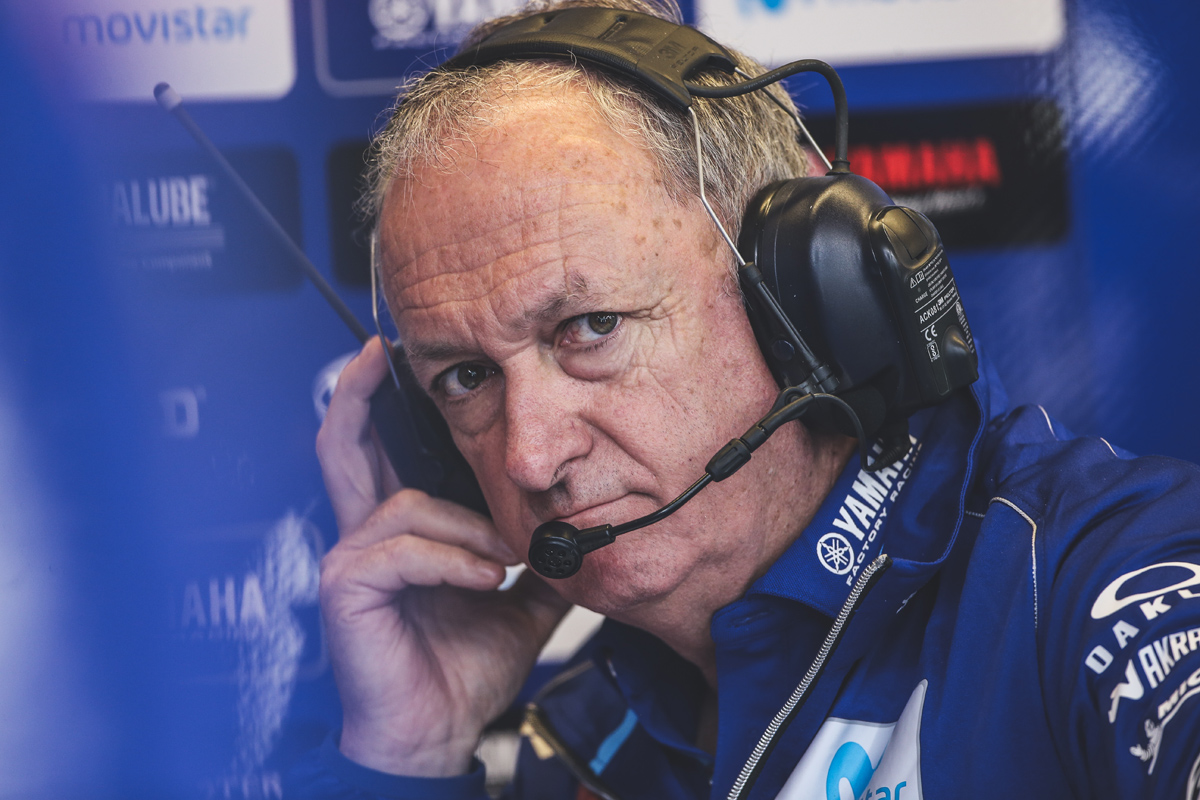
What was holding Maverick back last year and through this winter?
Viñales has enjoyed two positive results at the beginning of 2018, but he is still a way off the swashbuckling ace that appeared destined to push Marc Marquez all the way a year ago. According to Forcada, his team is attempting to find a balance with the M1, which has been developed around Jorge Lorenzo’s silky smooth style, and Viñales’ desire to brake and accelerate aggressively. That, and his rider needs a little more experience to effectively test new parts and set-up.
“The bike philosophy is made for Lorenzo’s kind of riding,” says Forcada. “For a rider with the style for braking very hard, who is not afraid of the bike moving, they struggle more with this bike. If you remember how Lorenzo rode, he was always very, very smooth and the bike looks like it was not moving at all. Even he complained the bike was moving, but compared with other bikes it was almost nothing. Now if the rider has an aggressive style, this is much more difficult to get this kind of turning by the corner speed.
“The problem is when something from outside is changing – then it’s difficult. I don’t know exactly how Maverick was working in Suzuki, if they tested many, many things or not. The thing is when we started the bike was working well with the tyres. When we changed the [front] tyre [at Mugello last year] we found some problems on the bike. The engineers build up new parts and brought them to the track. At that moment the rider must choose which is the best one. This is not easy because normally it’s not black or white. Sometimes you can fix some problems, but maybe you’re going to miss something else on the bike. Then it’s important for the rider to understand what we are going to gain and what we are going to lose [with the new parts], and then try to get the balance.
“For the young riders with less experience [it’s difficult] because in Moto2 and Moto3 they don’t have so much experience with this – also with the engine that they don’t get to adjust it so much. Sometimes it becomes a bit difficult to control everything. You have to understand not only one point. You have to understand the package of the bike, [like] knowing how much we’re going to gain in the beginning of the race, how much are we going to lose at the end of the race.”
2. Just how big a deal was the change in front tyre construction that came into effect at last season’s Italian Grand Prix?
In 2017, Viñales began the year like a man possessed, racking up three victories in the first five races and leaving the Italian Grand Prix with a 26-point championship lead. However, it would soon fall apart when Michelin switched its front tyre construction from Mugello onwards. From that moment Viñales regularly spoke of his desire to re-find that feeling from the early races, while he has only managed two top-two finishes since. So just how crucial was the front tyre change?
“We had a good base last year but then the front and rear tyre changed and it created a big difference with the bike’s behaviour,” Forcada says. “So during the winter tests we struggled with consistency. The problem is that to make this tyre work, we need a different setting. This sometimes works against the good points of the bike. It’s not to say the tyre is very different [it’s just that] to make this casing work, we needed to modify the bike. It means we have to change also the rear of the machine. The previous casing we used was more gentle. Also we had a bit more margin to adapt the bike because for us this kind of tyre was less critical. Now the new one needs exactly the right setting to make the tyre work. Normally this is a problem for us for the rear, for the grip. We can say the range for working is a bit narrow…but this is the case just for the Yamaha. Maybe for other bikes they adapt better because the weight balance, and transfer are completely different. In our case, we want to make a good setting to make the casing work, and then we create some problems on the rear.”
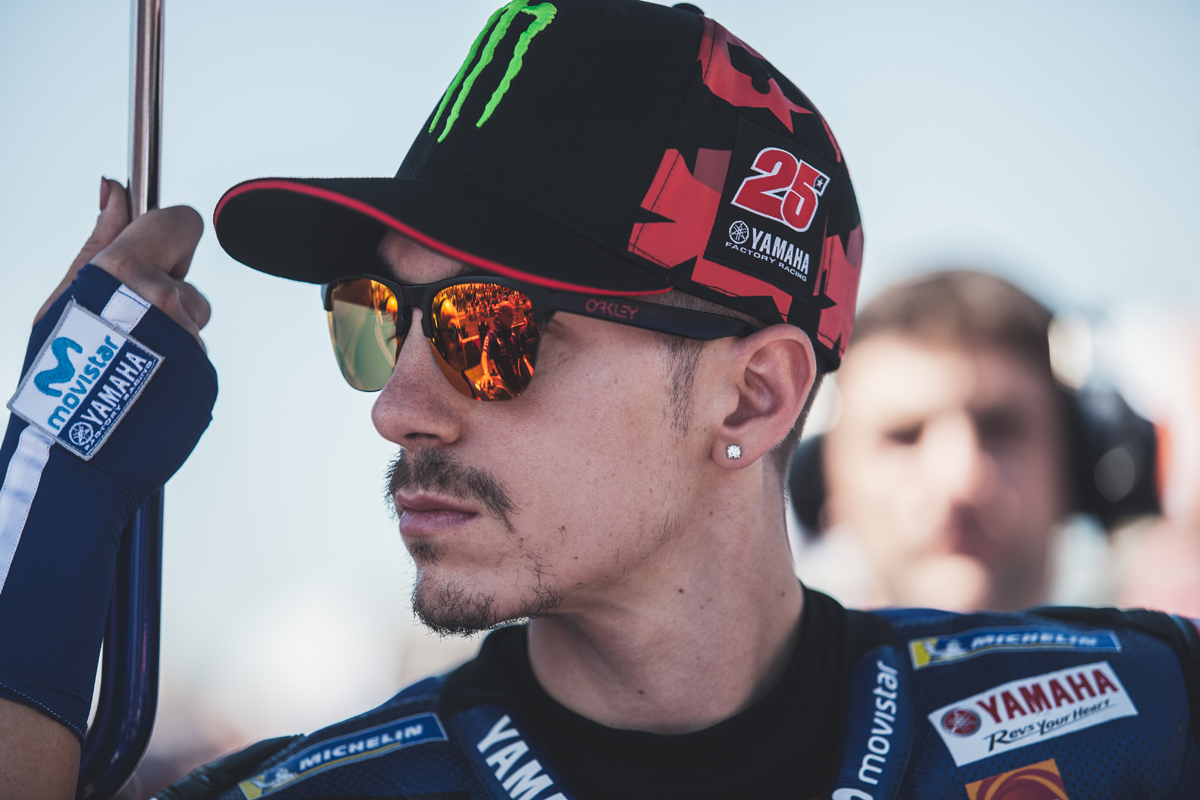
3. What does Maverick mean when he says he has to trust his own instincts more?
From the summer break of last year, it became commonplace to see Viñales wear a face like thunder. Only at the recent Grand Prix of the Americas was he cheerful on all three days. There was a suspicion that he was unable to use the set-up he wanted for his own riding style and he made pointed comments during last year’s Grand Prix of Valencia when he stated: ‘I need to follow my instinct more.’ So, in Forcada’s eyes, what did Maverick mean by this?
“The problem is sometimes that an engineer has a theory but they don’t ride the bike. Then sometimes what happens is that the theory that is working on paper, it’s different for the rider because he has a different feeling. The parts are being tested in Japan by Katsuyuki Nakasuga [Yamaha test rider]. Nakasuga and Maverick, their size is quite similar, but they have a different riding style. So, even though some settings work for Nakasuga, for him doesn’t work because he rides different. Sometimes all the riders need to say, OK, this is the best way on paper, but on track it’s not.’ To be able to say, ‘I want to go my own way.’ That means if the bike is designed for a softer suspension but if it’s better for braking in the hard suspension, go with the hard setting even if the engineer feels that the soft one should be better. [He needs to say,] ‘I’m the rider and I want to go in this way.’”
4. Does Maverick still need to work on his temperament?
At the final race of last year, Viñales was unable to hide his frustration at things going awry. The Catalan could be seen shaking his head regularly and appeared agitated on the bike. He is known to be a fiery character, and there have been suggestions that his fire shown over a race weekend can be detrimental to overall progress. Is this something Forcada believes his rider still needs to work on?
“When things are not going right Jorge [Lorenzo] and Maverick explode. He needs to calm down and then start to work again. Sometimes, before jumping on the bike we say, ‘we’re going to try this and do that.’ But once they’re on the bike, if he sees that his time is really bad, he becomes really pissed off and then everything is out of control. Sometimes it’s good to be aggressive because you have some situations that you really need to attack. So again it’s a compromise. For sure not only on the racing side, but in the normal life to control the problems always it becomes the quicker solution. When he’s completely upset and fighting, this is time we lose – it’s completely useless. So it’s important to be able to understand at the track, to explain and test. It’s not always working but we need to try. [Recently there has been] an improvement, but for us the best way is that even if it’s a disaster, to stay completely calm. But we know that this is almost impossible. If he’s completely calm, maybe he wouldn’t have become a rider.”
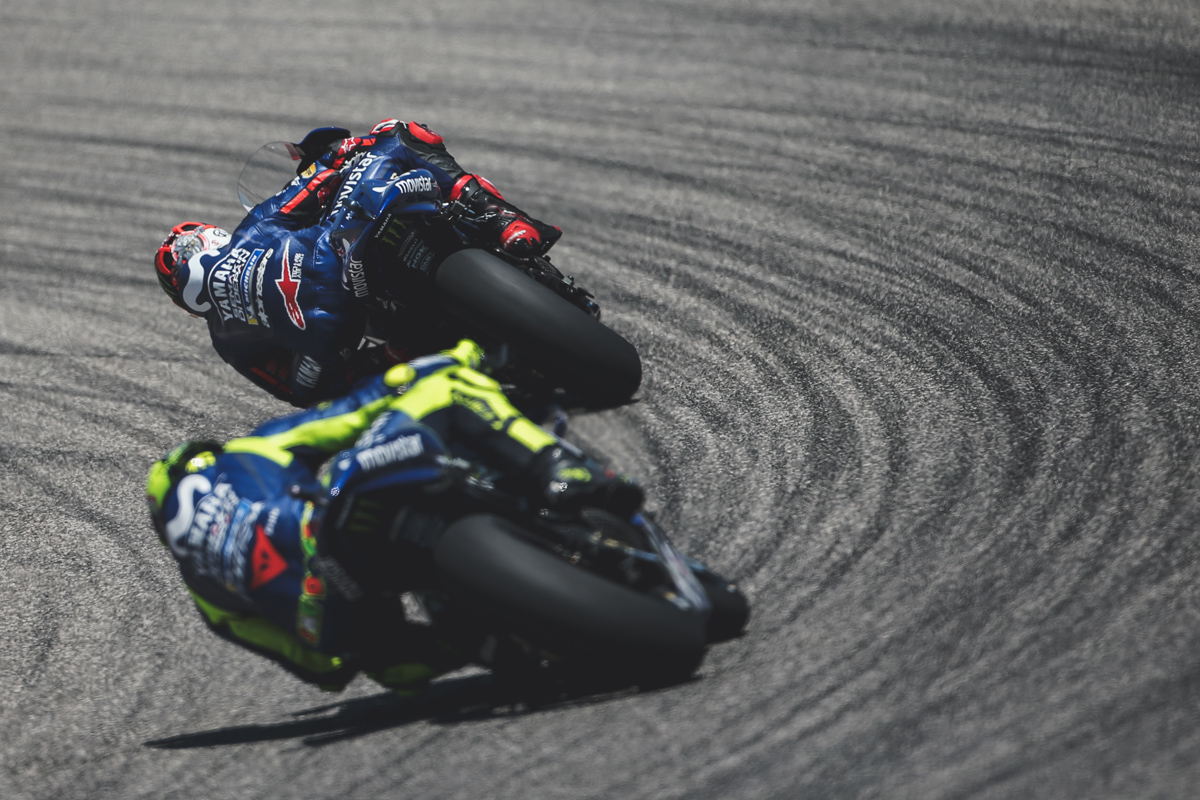
5. What spec of bike are riders Viñales and Rossi using at present?
Last season it is believed the factory Yamaha riders used more than six different chassis through the season. Understanding the exact specification of their current machines has been a mystery, too, with Viñales admitting in Qatar that he had reverted to a 2016-style chassis, a frame similar to what satellite rider Johann Zarco was using. So what spec of bike are the Movistar Yamaha men actually steering?
“There are many parts [on the current bike] that are 2017 [specs]. Some parts are 2016. Some parts are 2015. At the end, for the engineers it’s much easier to build up a new bike keeping the older parts that are working. So at the end, now we are in the chassis that is 2018, but this is based on the 2016, which is based on 2015, which is based on 2014. At the end the 2009 engine we can put in this chassis, so it’s not really a big difference. Basically the size, the measurements are always the same. Just working on the rigidity and sometimes on the rider position to try and change the weight balance. But that’s all. The bike philosophy always stays the same.”
6. Why do the factory Yamaha riders continue to have issues with electronics?
From the second half of 2016, the year in which spec electronics software was introduced, it has become commonplace to hear of Yamaha’s riders complain of the bike’s electronics set-up. It was a facet of the M1 that both Viñales and Rossi felt needed a great deal of improvement through pre-season, a feature of their rider debriefs that persisted at the recent race in Argentina. Only in Austin did Rossi say he feels Yamaha is now taking the right approach to electronics. Why does Forcada believe these issues have endured?
“When we used the Yamaha electronics system [before 2016] it was much better than now,” explains Forcada. “It was much more accurate. We could adjust many more things. Now with these electronics it’s working well but there are some parameters that we cannot adjust that we could in the past. Normally for the rider to go backwards, this is not a good thing. Anyway, even when we used our electronics, they got used to asking for every single small detail. Then it was possible to try to adjust it. Now there are some things that they say, ‘I would like to do this one’ and we say, ‘I’m sorry but this is impossible.’ The biggest difference for the rider is that in the past we could adjust everything in every single position of the bike, corner by corner, depending on bike angles, and by gear.
“Now there are some functions that we can still adjust corner by corner, but it’s less precise. For example, fuel consumption. Before it was easy for us to adjust the fuel consumption, the program to finish the race with less than 100cc of fuel. Now it’s less accurate. So always we have to give margin to finish the race. Many times, now we finish the race with more fuel than we expect. In the past if we said, ‘OK, we’re going to finish the race with 80cc of fuel’, we finished with 80cc. For the rider this makes no difference, but for us, for working, this is one of the differences we feel. There are some functions that the rider requests, ‘I want to adjust this parameter in this corner, but just when I am using 10% of the throttle at around thirty degrees [of lean angle] and the suspension is at ten millimetres.’ But now it’s less accurate. All the manufacturers are still working on the electronics to try to find the best set-up with what we have available to us.”
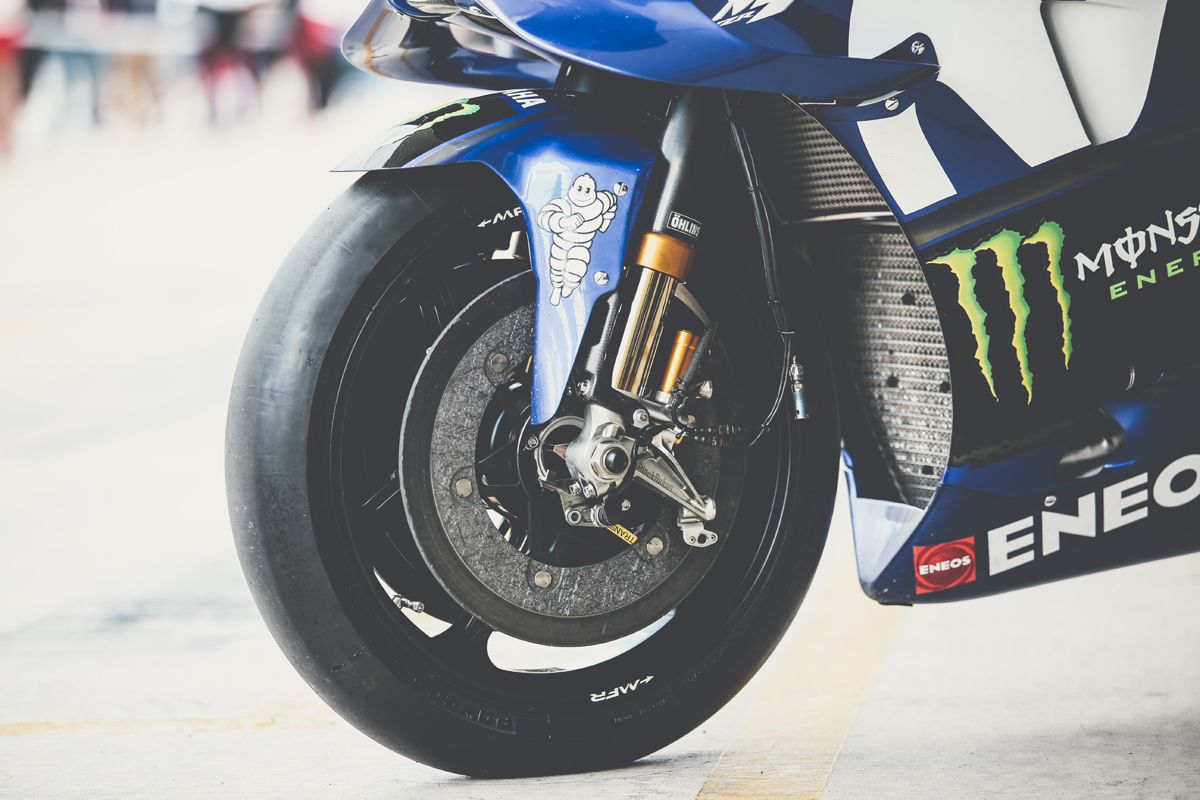
7. Why is Zarco so fast?
Both Viñales and Rossi have weathered some bad luck in recent weeks, but it has become a normal sight for Yamaha’s satellite rider Johann Zarco taking the fight to them – and occasionally coming out on top. If one is to look back at five of the past seven outings, the Frenchman has outperformed both the factory men. How is this possible?
“When he arrived, he understood quickly that the bike was made for Lorenzo’s style,” Forcada says. “He tried to ride the bike the same as Jorge. He had no experience before on a MotoGP bike. He started from zero and said, ‘OK, from zero. I’m going to go there.’ If you start in the opposite way, we have a double way to go because have to go back to zero and then we do that in a new way. But also in the satellite team they don’t have many parts to test. So if you become a factory rider, you have to accept you have the best bike, you have one engineer team working, we have everything the manufacturer can do for the rider. But you have to try many, many things that are not always working. This is part of the job if you become a factory rider.”
Photos by CormacGP

